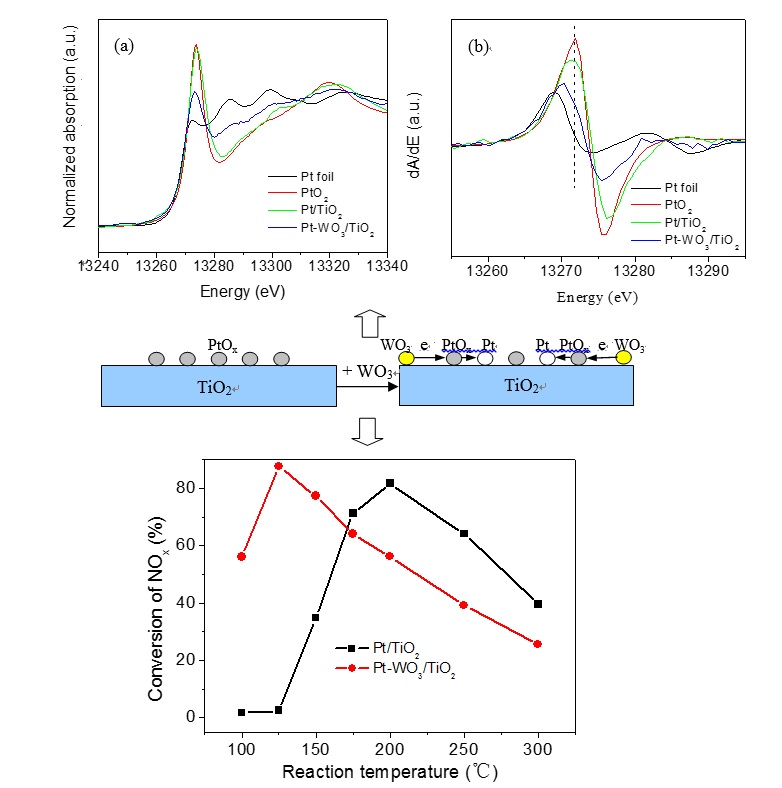| Characterization of Pt-WO3/TiO2 catalyst for H2-SCR of NOx by XAFS method |
| From: PublishDate:2017-06-16 Hits: |
The removal of pollutants emitted from diesel vehicle has attracted more and more attention and the control of NOx at the low-temperatures, such as under “cold-start” conditions, is a challenging task in the environmental catalysis. Previous research demonstrated that supported Pt catalyst is active for the selective catalytic reduction (H2-SCR) of NOx. In terms of cost, the catalyst with low Pt loading is preferred. For Pt catalyst with low Pt content, its deNOx activity at low temperatures (<200 ℃) needs to be improved. A team focused on the air pollution control and environmental catalysis at Beijing University of Chemical Technology has developed an active Pt-WO3/TiO2 catalyst for the H2-SCR of NOx. The structure of this catalyst has been characterized by X-ray Absorption Fine Structure (XAFS) analysis conducted at Beijing Synchrotron radiation facility (BSRF), Institute of High Energy Physics, Chinese Academy of Sciences. XAFS analysis revealed that the Pt species in Pt/TiO2 was present in Pt4+ oxidation state. After doping WO3 there is synergetic effect between Pt and WO3. Electron will be transferred to Pt from WO3, thus leading to part of Pt species over Pt-WO3/TiO2 was present in the form of metallic Pt. The metallic Pt is the active sites for the H2-SCR of NOx at low temperatures. As a result, Pt-WO3/TiO2 catalyst showed high low-temperature activity for the reduction of NOx. Their research has been published in Applied Catalysis B in 2016. This research elucidated the relationship between the chemical state of the active sites and the catalytic performance of the deNOx catalyst. It provides valuable insights into the catalyst design for the control of NOx.
Article: Zhiming Liu *, Yunan Lu, Lei Yuan, Lingling Ma*, Lirong Zheng, Jing Zhang, Tiandou Hu. Selective catalytic reduction of NOx with H2 over WO3 promoted Pt/TiO2 catalyst,Applied Catalysis B: Environmental 188 (2016) 189–197.
|
|
|
| Chinese
- Metal-free efficient photocatalyst for stable visible water splitting——Top ten major scientific progresses in China in 2015
- The nano-resolution imaging platform was awarded the first rate prize of Beijing Science and Technology in 2014
- Beamline 1W1 of BSRF started to runoperate in the couplingparasitic mode of BEPCII
- Synthesis of High Performance Polymer Materials for Field Effect-Transistors
- Surfactant molecular aggregates in green solvents
- GIXRD has played an important role in the characterization of organic thin-film transistors
Science Highlights
Home /
Copyright © 2011 - 2012 Beijing Synchrotron Radiation Facility


